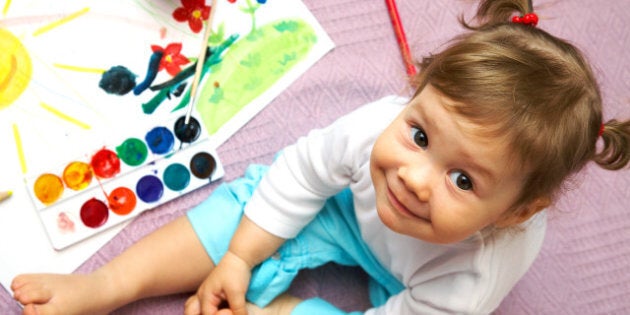
If you're a parent, chances are you've encountered a child who attempts to talk at an impressively young age. Similarly, some children seem to have an uncanny eye for reading and identifying facial expressions. How children choose to explore the world, is indicative of what their preferred learning style is.
A great body of research has been dedicated to understanding different learning styles. Although most children learn by doing, in general children tend to gravitate more towards one of three learning styles: visual, auditory or kinesthetic. Understanding your child's preferred learning style will give you insight into how you can best nurture their educational and social curiosities.
A great way to determine your child's preferred learning style is to observe them while they are playing with others.
Children who have an auditory learning style often begin talking at an early age, have a wide vocabulary, and are quite talkative. During the early years, they delight in hearing songs and singing. They have a wonderful imagination and love dramatic play, both at home and at school. They make friends with children who share similar interests, and prefer to play with one friend at a time. Their interactions are rich in content, and they often make deep friendships, taking time to share stories about themselves and listening to others. They are not necessarily as active as kinesthetic learners.
Auditory babies love to be taked to, and often babble constantly. When reading books, they follow the story more so than the illustrations, and they have great comprehension skills. They love music, although it can bother them when it is constant or too loud.
To get an auditory child's attention, it is really effective to ask them to "put on their listening ears." They will enjoy pretending to put on their imaginary ears and carefully listen to what you tell them.
Kinesthetic children love to touch and be touched. They like playing in groups, and tend to hug and express feelings physically. If your child has a more kinesthetic learning style, they will enjoy active and social settings like school and play groups, and will also prefer activities where they gets to use their body, like dance or sports.
For kinesthetic babies, it is important to let them touch and mouth objects. This is how babies learn in general, but it is especially important for kinesthetic babies. They will also like to be held more, and require extra hugs and rough and tumble play. They like soft and comfortable clothing, and may be particularly bothered by tags on clothing, or anything itchy or tight.
To get your kinesthetic child's attention, bring yourself to your child's eye level and either affectionately touch their arm or lightly hold their hand while speaking. That physical contact will grab and retain their attention.
Children with visual learning styles tend to be quite meticulous about their belongings. They spend hours arranging their toys, or choosing their clothes. They do not like it when others "mess up" their toys, or use them in different ways. Visual children can easily entertain themselves. They sometimes can seem bothered by friends, but it is because they are a little more peculiar about how things should look. They are often very strong readers, excellent with visual arts, and quite detail-oriented.
Visual babies like toys that are visually stimulating, like mirrors, patterns, and colours. As infants, they will enjoy looking at you and exploring your features, as well as their own.
Visual children love books, especially ones with beautiful or complex illustrations. They will often diverge from the story to talk about the image, which is something parents should encourage.
For visual learners, it is best when parents talk to them at their eye level, and look at them as they speak.
Although learning styles are good to keep in mind when choosing toys and activities for your child, it is important to provide sensorial stimulation of every type to your little one. This ensures essential connections in the brain are made and reinforced in more than one way. Only focusing on one type of learning would be equal to teaching a child one subject just because they are good at it, and ignore everything else. Children form their strongest connections when an experience calls to all of their senses.